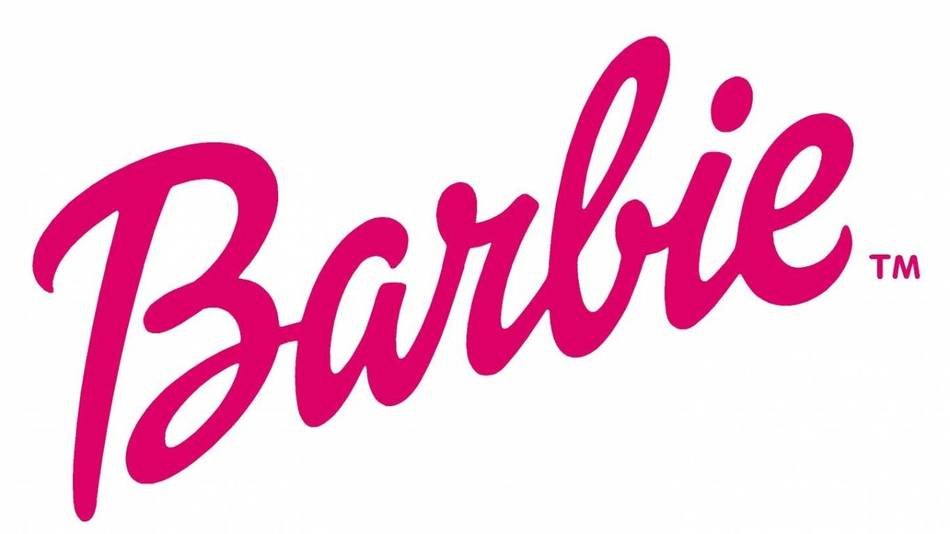
I’m a Barbie girl, in a Barbie world! For many children, the “Barbie world” has provided an outlet to act out and play on their dreams of growing up. With her fabulous outfit changes, wide-ranging career opportunities, and iconic merchandise, the Barbie doll was and continues to be a memorable aspect of childhood, a product of imagination, and an influencer of the way a nation of girls has come to see themselves. Though the world knows Barbie as her own person, a lot of her personality can be viewed as a reflection of the woman who birthed her, Ruth Handler.
Handler was born on November 4, 1916, in Denver, Colorado into a family full of hard-working and supportive businesspeople. As a child, Handler didn’t like dolls and never played with them. In fact, she was a self-proclaimed tomboy who preferred working over playing. In fact, Barbie’s iconic resume of diverse professions can be viewed as a reflection of Ruth’s early-set enthusiasm for job opportunities. Handler was always picking up and enjoying jobs, ranging from working as a cashier at a pharmacy when she was ten years old, to working at a family luncheonette, and even temporarily managing it. When recalling her early entrepreneur days, Handler stated, “I don’t know what was driving me, but I needed to prove myself from the day I was born.”1
Later on, Ruth married an aspiring artist by the name of Isidore Handler, whom she referred to by his middle name, “Elliot.” Together, they moved to Los Angeles, California, where Ruth worked at Paramount and Elliot at the Beranek and Erwin Lighting Fixture Company. With Elliot’s artistic talent and Ruth’s natural salesmanship, the two were able to launch a successful business. Soon after the beginning of this partnership, Ruth became pregnant with their first child, Barbara Joyce Handler, and three years later with her second, Kenneth Robert, also known as Ken. Although she loved her children dearly and enjoyed spending time with them at home, she “missed the fast-paced business world.” For women in the 1940’s, the combination of being a full-time worker, mother, and wife was uncommon. Ruth Handler was ahead of her time.2
Together, Ruth and Elliot, along with an old coworker of Elliot’s named Harold “Matt” Matson, launched the business named Mattel. Their company faced several obstacles, including increased demand from the company that caused Ruth to devote more of herself to the company, thereby driving Harold away. Through the investment of Ruth’s brother-in-law, Mattel was able to grow, and by 1952, the company had employed seven hundred office and factory workers. One of their first toys, the “Burp Gun,” which was based on the Mickey Mouse Club show, was introduced at Toy Fair, an event for companies to launch their products to store buyers, where it was loved and purchased in large orders. Unfortunately, the show didn’t air until later in the year, meaning the consumers didn’t know anything about the toy, and thus it resulted in cancelled orders and hardly any sales for Mattel. Once the show aired, however, the “Burp Gun” was a huge success—even President Dwight Eisenhower’s grandson received one!3 This hit toy proved that marketing to kids, rather than to store buyers, was a smart move to make, and it paved the way for the next toy that would aim to appeal to young girls.4
Elliot was usually the one in charge of designing the toys, but Ruth had developed a design of her own this time. As she raised her kids, she paid attention to her daughter, Barbara’s, playtime and noticed that she and her friends quickly became bored and uninterested by the baby dolls that were the available toys for girls in the 1950s. Because of the societal ideals for women during this time, these dolls were either made for young girls to practice being “Mommy” and nurture them as if they were their own babies, or they were “glamour” dolls which guided girls to buy and learn how to use beauty products. Ruth noticed that her daughter Barbara and her friends preferred to play with adult paper dolls, despite the frustrating fragility of the material.5 In an interview, Ruth explained these observations. “They would sit and carry on conversations, making the dolls real people. I used to watch that over and over and think: if only we could take this play pattern and three-dimensionalize it, we would have something very special.”6

Ruth’s design for the doll was very much influenced by the ideals of women and beauty during the 1950s, especially with standards set by movie stars and pinup girls. Ruth wanted her doll to be pretty enough for girls to aspire to look like her when they grew up, as the doll would embody what the girls would like for themselves. The doll she used for inspiration was the “Bild-Lilli” doll, which was a risqué novelty gift for men—a much different target audience than the one Ruth had in mind. Ruth was insistent on creating her doll with similar features, despite her husband’s protests that “no mother is going to buy her daughter a doll with breasts.” The rest of the all-male team agreed with him, saying that the doll Ruth envisioned was too curvy, sexual, and expensive.7 Even still, Ruth wanted this doll to represent everything a girl could aspire to be as a teenager, and argued that “a little girl could dream dreams of growing up and every grown-up she saw had breasts!”8
As a businesswoman herself, frustrated with the idea of staying home and being a housewife all day, Ruth wanted to design the doll in a way that would get girls to aspire to have duties that went beyond the kitchen. One of the ways in which the doll would achieve this was through her clothing and accessories. Her outfits featured in stores would not only follow the fashion trends seen on both celebrities and on the general public, but also would be made in accordance with her varying professions, such as a pink doctor’s coat or a navy blue police officer’s uniform.9 Author of Forever Barbie, M.G. Lord, said it best, “Barbie was her own woman. She could invent herself with a costume change.”10 The goal was for little girls to fashion and model her to their hearts content, and to know her as her own person, as well as a person they could aspire to be like someday.

With the messages of glamor and opportunity encompassing each plastic doll, Ruth felt sure that her toy would be a success. This doll was her dream. At the Toy Fair, Mattel introduced the doll as “Barbie Teenage Fashion Model” in order to decrease the attention of her sexuality and increase the message to parents that Barbie would serve to inspire young girls to be well-groomed. This wasn’t enough. The doll was hated! Interviewed parents were disturbed by Barbie’s figure, buyers were concerned over her breasts and sex appeal, and toy industry competitors were shocked that another company would try to sell “whore-looking dolls.” Even Lou Kieso, the representative buyer for Sears, who could heavily influence Barbie sales, was unimpressed and refused to take a sample back to the Sears headquarters, as did a majority of the other buyers. Ruth was devastated. She cut the entire production by nearly half and spent the next few months worrying about what would become of her creation, of whether it would disappear before even having the chance to be introduced to the public.11
But then, everything changed. Once the television commercials aired, school ended for the summer, and kids started seeing the doll on the shelves of the stores, Mattel started getting calls from buyers who wanted to buy the Barbie doll. Ruth recalled that “the industry was just going frantic with demand for Barbie.” It was like the “Burp Gun” all over again. The public fell in love with Barbie, and Ruth’s dream for the doll to allow girls to impose their dreams and their own realities onto the dolls, that girls would view Barbie as themselves rather than someone to nurture, was coming true.12

Barbie has become one of the best-selling toys in history, as well as the best-selling doll in the world. She brought in sales that reached in the billions, and her six-letter name would receive recognition around the world. That being said, Ruth didn’t just create a money machine. By birthing Barbie, Handler also created a controversial icon that would spark heated debates later on. For Ruth, as well as for many others in the world, Barbie was not simply a symbol of beauty, but rather, her purpose was to provide the opportunity for girls to define what it means to be feminine in their own way.13 However, arguments have and continue to be made over Barbie’s unrealistic body proportions, her exclusion of people who look different than white, thin, able-bodied women, as well as whether her emphasis on fashion overshadows the actual career she’s dressing as—implying that women care more about how they dress for their job than actually working. The Barbie doll has become the subject of conversations regarding important societal issues, such as gender roles, feminism, and body image.14
Hearing the voices of movements, critics, and fans, Mattel has been continuously attempting to make Barbie dolls more diverse and inclusive, whether that’s making Barbies with features of different races or creating Barbies of ranging body types.15 Though there will always be improvements that can be made, Ruth’s vision for young people to aspire to be both opportunistic and feminine, both hard-working and glamorous, lives on through her successful and iconic Barbie doll.

- Tanya Lee Stone, The Good, the Bad, and the Barbie: a Doll’s History and Her Impact on Us (New York: Penguin Group, 2015), 9-12. ↵
- Tanya Lee Stone, The Good, the Bad, and the Barbie: a Doll’s History and Her Impact on Us (New York: Penguin Group, 2015), 15-17. ↵
- Robin Gerber, Barbie and Ruth: the Story of the World’s Most Famous Doll and the Woman Who Created Her (New York, NY: HarperCollins, 2009), 98-99. ↵
- Tanya Lee Stone, The Good, the Bad, and the Barbie: a Doll’s History and Her Impact on Us (New York: Penguin Group, 2015), 18-22. ↵
- Tanya Lee Stone, The Good, the Bad, and the Barbie: a Doll’s History and Her Impact on Us (New York: Penguin Group, 2015), 23-24. ↵
- Ruth Handler (Inventor of ‘Barbie’) R.I.P., video file, 11:23, YouTube, posted by MyTalkShowHeroes, July 19, 2015, https://www.youtube.com/watch?v=cleZIXu4PXM. ↵
- Robin Gerber, Barbie and Ruth: the Story of the World’s Most Famous Doll and the Woman Who Created Her (New York, NY: HarperCollins, 2009), 7-8. ↵
- Ruth Handler (Inventor of ‘Barbie’) R.I.P., video file, 11:23, YouTube, posted by MyTalkShowHeroes, July 19, 2015, https://www.youtube.com/watch?v=cleZIXu4PXM. ↵
- Tanya Lee Stone, The Good, the Bad, and the Barbie: a Doll’s History and Her Impact on Us (New York: Penguin Group, 2015), 33-45. ↵
- M. G. Lord, Forever Barbie: the Unauthorized Biography of a Real Doll (New Brunswick: Goose Lane Editions, 2004), 9. ↵
- Robin Gerber, Barbie and Ruth: the Story of the World’s Most Famous Doll and the Woman Who Created Her (New York, NY: HarperCollins, 2009), 17-19. ↵
- Robin Gerber, Barbie and Ruth: the Story of the World’s Most Famous Doll and the Woman Who Created Her(New York, NY: HarperCollins, 2009), 110-111. ↵
- Tanya Lee Stone, The Good, the Bad, and the Barbie: a Doll’s History and Her Impact on Us (New York: Penguin Group, 2015), 44-45. ↵
- Robin Gerber, Barbie and Ruth: the Story of the World’s Most Famous Doll and the Woman Who Created Her (New York, NY: HarperCollins, 2009), 111-112. ↵
- Maria Cramer, “After All These Years, Barbie Is Still Reinventing Herself,” The New York Times, Jan 29, 2020, https://www.nytimes.com/2020/01/29/business/mattel-barbie-dolls-vitiligo.html. ↵




59 comments
Amrie Cortez
This article was so interesting! I didn’t know the Ken doll is named after her son! what an amazing way to include both of her kids. I also didn’t know Mattel was named after a guy named Matt. I’m glad she didn’t pull the dolls from the stores, otherwise children wouldn’t have memorable experiences they created with these wonderful dolls.
Marissa Rendon
Growing up as a kid I was obsessed with barbies, and had almost all the barbie dream houses. I definitely think barbie is a great marketing brand, due to her many roles she portrays. For example barbie as a doctor, vet, scientist, mother, sister, babysitter, etc. I feel as if these different kinds of roles barbie plays helps mold young girls into deciding what they want to be when they grow up. As well as really helping your imagination grow. This article was such an interesting beautiful article to read!
Adelina Wueste
This article was super interesting! I had never heard the story behind how barbie was made. It was nice to hear that Ruth Handler tried to make a doll that would inspire young girls and it was interesting that Barbies multiple jobs are modeled after Ruths life. A detail that I found to be cool was that names like barbie, ken, and Mattel were all taken from people that Ruth knew and was close to. It was also interesting to me that both of Mattel’s big toys seemed to fail before picking up momentum. I think that Ruths story really highlights how determination can eventually lead to success.
Yanelle Nicholson
This article was very enjoyable to read. Hearing the real motivation behind this doll and how it gives girls the chance to “define what it means to be feminine in their own way” inspires and amazes me. It is also incredibly empowering that the maker of this works to make Barbie dolls more inclusive and diverse so that everyone who purchases it can feel like they are represented.
Laura Poole
Congratulations on your award! It was clearly so deserved. I was so hooked into every word of this! It was so fun to read about the story of a childhood toy I played with so much. Barbie still plays such a current role in many children’s childhoods! I love that Barbie promoted the idea that girls can be anything they want to be! Whether that be a doctor or a dog washer, it is all possible!
Virginia Alonso
In the current modernized world we live in today , Handler’s ideal vision for Barbie continues striking audiences in all age groups: inclusivity , glamor, representation . What many companies sexualized in women or young girls, later transitioning into a world icon and model aspiring many years to come . I could not imagine a universe where Barbie didn’t exist , where her influence brought freedom of expression in fashion and self-value. Congratulations on receiving this award as it is certainly more than well-deserved, it is a work of scholarly writing upon a topic of gender, sexuality, culture- endless in its impact to our current lifestyle.
Jocelyn Elias
I think this article is able to demonstrate through the product Barbie how any young girl’s dreams can become true. As time passes, not only has inclusivity in the product changed it also demonstrates that anyone can make their dreams come true and how the beauty standard for the audience is changing to be more inclusive and more appropriate for audiences.
Victoria Cantu
I enjoyed reading about how the idea of the first Barbie ever was created. As a kid I always loved how Barbie could be anything she wanted with just a change of clothing. I believe that Handler did an excellent job in the sense of allowing young girls to imagine their Barbie to influence who they wanted to be as an adult. I loved the small details put into this article, it was inspiring as well very informative! Learning the true meaning behind the Barbie doll and seeing how they are improving the inclusiveness of the invention shows how Barbie has truly made an impact for girls all around the world.
Gisselle Baltazar-Salinas
This award is well earned. I never knew the story of Barbie and just how empowering it really is. I’ve seen Barbie as very a very controversial topic as you mentioned in your article, but I feel that stems from most not knowing the true intention of what Barbie is supposed to represent. Sure their is ways to improve Barbie to get this message along but I can see where Handler also to make an appeal to the public by making Barbie the ideal women one may say. Nonetheless, a great article so happy for you!
Paulina Gonzalez
I grew up with Barbies and owned a bunch of them when I was a kid. learning the history of the Iconic doll is very interesting since you get to see how far the brand has gone. It’s great to see that Barbie is pushing for more diversity in their common dolls rather than just the special edition ones. I remember growing up and seeing all of the culturally diverse barbies like the Frida Kahlo one but they were all so expensive. Now Barbie is trying to make them more accessible which is great.